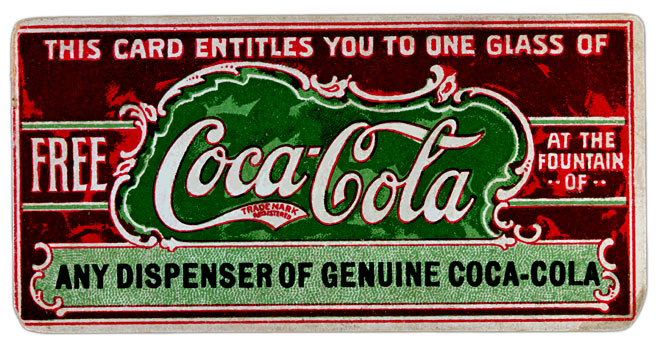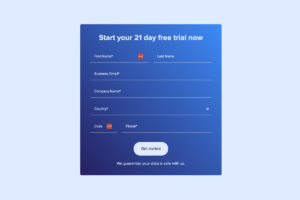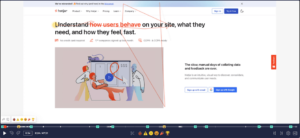The idea of getting a discount over the actual price, however small, makes users feel good about their purchases. It makes the users feel smart like they are gaming the system. There is even science to prove that receiving a coupon releases oxytocin in our brains (See Better than Kissing). As high as 77% users follow a brands’ social media to stay updated on their offers. There are numerous popular websites and chat groups dedicated to sharing coupons.
Coupon codes are very popular with shoppers. According to this research coupon redemptions have surpassed 90 billion in 2022.
(In 1887, Coca-Cola created one of the first coupons, and it changed the marketing world forever. https://www.wired.com/2010/10/pl-protoype-cocacola/)
Merchant concerns with coupon codes
A lot of merchants want to hide the coupon code field behind a drop-down. Merchants believe shoppers are distracted at the Basket page to go coupon code hunting if they see a coupon code field. They fear this will increase time for a conversion and coupon code discounts will reduce margins. There are still more reasons for merchants to be cautious.
It’s true. Users do go coupon code hunting but the numbers and direct observations show that it is regardless of the coupon code field being behind a drop down. According to a GA sales report for one of our clients, 44% of the sales in the previous 12 months used coupon codes. In their User Behaviour reviews, we have observed that users spend up to 6 minutes to go hunting for a coupon code. Then some users take another 30 sec to carefully type each letter of the code. And, if it didn’t work, spend minutes on another few attempts. It’s common for users to try the same code at least twice if they think it was typed wrong. In some instances, the frustration led these highly motivated users to abandon their carts.
On the up side, coupon codes can provide a higher spend with shoppers spending 24% more than shoppers who don’t use them, bigger basket size with 29% of online shoppers will add a purchase if it’s heavily discounted or even free marketing.
In reality, the coupon code finding and redemption experience feels broken. The trend shows us that shoppers are quite willing to spend time to go search for the coupon codes at an important step in the sales checkout process. We should be able to control this distraction and have a more managed experience for the shopper.
As solutions experts, how can we –
- make sure users remain on your site and move forward with checkout?
- provide a delightful checkout experience?
Finding a coupon code
Merchants share coupon codes via email, on social media, in ads, or offline. All these mediums require shoppers to leave the website in order to retrieve the coupon code.
To simplify this, we can use a time-tested sales tactic – if the shopper is taking time to decide, offer a small discount to close the sale. For a high-intent shopper who is taking time on the basket page, using a time-delayed popup show them the coupon code they are eligible for and let them click to apply it, no typing needed. This way you will keep the shopper on your website and move forward with the checkout process. Whilst the 5-sec email popup on the homepage gets you an email, the one at the basket page can quickly get you a sale.
Applying a coupon code
We notice a lot of users enter the coupon code wrong. It may be a typo if you type or an extra space if you copy-paste the coupon code. Usually, it may take a second and a page refresh for the system to check and show if the coupon code is valid or not. It is a slow process and it can be repetitive if the coupon code is invalid. (Using PWAs these checks are much faster. )
If it fails, shoppers venture out scavenging for stray coupon codes. Some succeed but most fail as they will find old inactive or fake coupons. It’s a waste of time.
To prevent errors at this stage, make sure you create simple, UPPERCASE, speakable and memorable coupon codes. It is not a licence key or a password. Avoid hyphens or special characters. Try to avoid numbers if you can as it makes it easier to type on the mobile phones. (Not all phones show numbers and letters together and users have to switch keyboards.)
When the user is redeeming the coupon code –
- Make sure the coupon code field types only in UPPERCASE
- Try to catch any format errors as the user is typing or as they Paste it.
- Automatically trim extra space before and after the code
- If no active coupon codes match this term, inform users what they should check for – spelling, numbers etc.
- If it matches an expired code, tell them this reason and show them active coupon code options.
- If it is already used, tell users what to do next. If they need to contact support, provide a link or email.
- After the 3rd or 4th failed attempt, suggest eligible coupon codes to apply and move forward towards conversion or tell them that there are no active coupon codes at the moment.
Delighting the user
When a coupon code works, designers have such an opportunity to deliver delight. We must move away from a silent operation that you barely register till you see the change in the total price. This discount is a gift! Make it pop and make it joyful. Make the user feel delighted. Highlight that the shopper is getting the best price. Use animations, bold colours or cool emojis. This will make the checkout experience feel lighter and boost the shopper’s confidence for the next step of payment.














